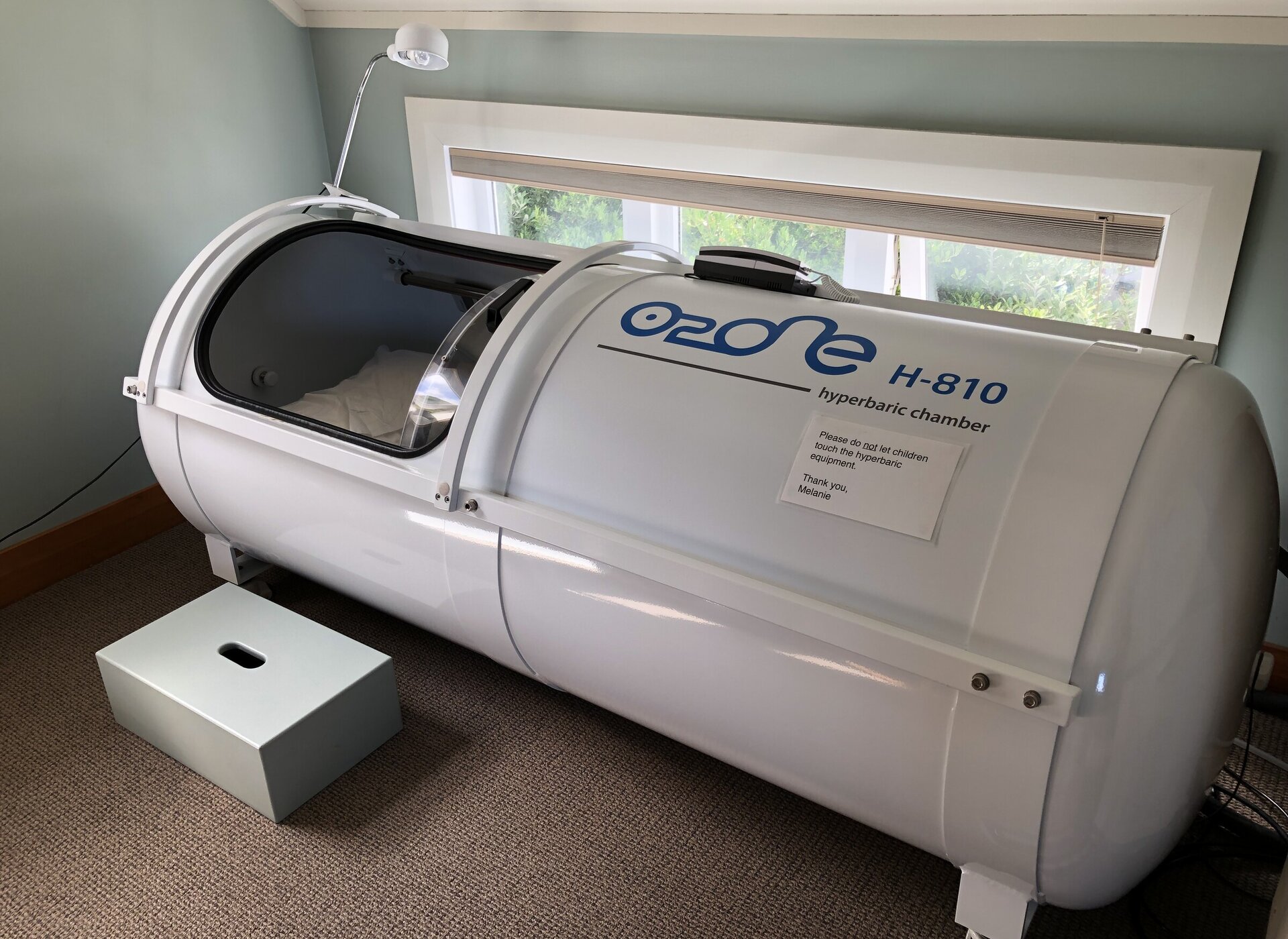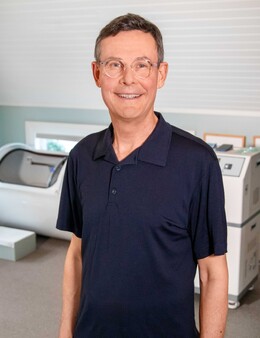Hyperbaric Oxygen Wellington
Hyperbaric Oxygen Therapy
is beneficial for
Head injury/concussion recovery and post-concussion syndrome recovery
Long covid recovery
Healing wounds
Stroke recovery
Recovery from chemo and radiation injury
Foot ulcers or stoma ulcers
Inflammatory bowel disease such as ulcerative colitis or Crohn’s
Increasing energy- helping you sleep.
Anti-aging and collagen production in the skin.
Sleep apnea
Lyme Disease
Please note it is the regular 'on-off' effect of the pressure and oxygen which helps your tissues to heal. To recover, you need to be prepared to commit to a series of sessions on a daily basis. Most of the research is done on forty sessions but we always aim to use the fewest sessions neccessary to get the job done.
Once you have had your Hyperbaric Medical with our Director Dr Melanie Young Hyperbaric technician, we will be able to give you a better idea of how many sessions you may need for your recovery.
WHAT IS HYPERBARIC OXYGEN THERAPY?
Hyperbaric Oxygen Therapy (HBOT)
Under normal conditions, oxygen is primarily transported through the body by red blood cells. However, during Hyperbaric Oxygen Therapy (HBOT), oxygen is dissolved into all body fluids—including plasma, lymph, and central nervous system fluids—allowing it to reach areas with reduced or impaired circulation. This increased oxygenation supports the body’s natural healing processes by delivering vital oxygen to damaged tissues. Additionally, HBOT enhances the effectiveness of white blood cells in combating infection, reduces inflammation, and promotes faster growth of new blood vessels in the affected areas. The treatment is simple, non-invasive, and pain-free.
There are two main types of HBOT: high-pressure HBOT and mild HBOT. High-pressure HBOT is administered in hard chambers at pressures greater than 1.5 ATA, utilizing 100% oxygen from oxygen tanks. This method is very expensive to run and more risky due to the oxygen tanks required. Mild HBOT, by contrast, involves lower pressures (typically 1.5 ATA or below) and uses an oxygen concentrator to deliver 90-95% oxygen in either soft or hard chambers.
While high-pressure HBOT can result in higher oxygen saturation in tissues, many conditions respond equally well, if not better, to mild HBOT. Clinical studies on neurological conditions have shown little difference in outcomes between high and mild pressure treatments. At Hyperbaric Oxygen Wellington, we offer state-of-the-art hard-sided mild HBOT chambers, which provide a gradual increase in pressure up to 1.5 ATA—the equivalent of being 5 metres underwater.
Our facility is professionally run by a very experienced hyperbaric oxygen technician. We use advanced 10-litre oxygen concentrators, delivering 93% oxygen through medical-grade silicone tubing and cannulas or masks for optimal oxygen delivery. When undergoing treatment at 1.5 ATA, your plasma and tissue oxygen saturation can increase by 5 to 7 times, meaning your tissues receive up to 500% more oxygen than normal.
Looking for more information? Read Research on Hyperbaric Oxygen Therapy.
Hyperbaric Oxygen Wellington FAQ's
What are the benefits of HBOT?
Benefits provided by mild hyperbaric oxygen therapy are the result of extra oxygen being carried to
the tissues and organs of your body, providing you with one or more of the following effects:
Improved oxygen delivery to injured tissue
Increased healing rates of overused and traumatised tissue
Increased blood vessel formation (angiogenesis)
Powerful anti-inflammatory effect
Advanced wound healing
Improved infection control, as higher levels of oxygen have a natural antibiotic effect
Preservation of damaged tissues
Elimination and reduction of effects from toxic substances
Reduction or elimination of tissue obstruction by gas bubbles
Stem cell proliferation and mitochondrial switching
Immune system normalisation
Reduction of oedema/swelling around damaged tissues
Mild HBOT is widely promoted overseas and utilised as a preventative, recuperative, and restorative therapy for a wide variety of diseases and conditions. It is also used by athletes to enhance performance and speed healing time; it is good for you!
What Conditions are Treated with HBOT?
Hyperbaric oxygen therapy is used internationally for more than 80 different conditions. Research variously supports its use for athletic injuries and performance, arthritis, autism, attention deficit disorder, auto-immune disorders, Bell’s Palsy, brain and head injuries, cardiovascular disease, cerebral palsy, Crohn’s disease, dermatological conditions, diabetes, dementia, interstitial cystitis, irritable bowel syndrome (IBS) and ulcerative colitis, Lyme disease, learning disabilities, macular degeneration, migraine, multiple sclerosis, neuropathies, pervasive development disorders, PTSD, reflex sympathetic dystrophy, reconstructive surgery, spinal cord injury, stroke, and more. Research is showing that it may be effective as an anti-aging and cancer prevention strategy. Research shows it also works alongside chemotherapy treatment to improve the tumour cell killing effectiveness by 30%.
High pressure HBOT is FDA approved to treat air or gas embolism, carbon monoxide & cyanide poisoning, crush injury, acute traumatic ischaemia, decompression sickness, delayed radiation injury, diabetic foot ulcers, enhanced healing of problem wounds, exceptional blood loss, gas gangrene, intracranial abscess, necrotising soft tissue infections, osteomyelitis (refractory), skin grafts and flaps (compromised), and thermal burns.
All other conditions treated by hyperbaric chambers are considered off-label uses. Many of these uses are quite commonplace in countries such as the USA, Russia, China, Japan, Italy, Australia and the U.K.
How should i expect mild HBOT to feel?
During your HBOT session you will be lying down inside the chamber, relaxing comfortably with your head supported by soft pillows. While inside the chamber you can rest, read, meditate or take a nap. Although the chamber is warm you will be offered a blanket. You will breathe concentrated oxygen (90-95% O2) through a cannula or face mask.
Our well trained and experienced technician will be with you throughout your first ’dive’ and will be in constant communication with you during this time and subsequent treatments as required. They will gradually pressurise the chamber up to 1.5 ATA and will keep checking with you to ensure you are completely comfortable. If you wish, your technician can teach you how to have complete control of the pressure in the chamber. You are also able to contact an assistant with the buzzer and speak with them on the built in intercom at any time.
You may hear a variety of noises: the sound of air moving through pipes and valves and some clicking noises. Whenever the chamber reaches a new gauge of pressure, it is maintained by ‘flushing’ of air out of the tank via a vent. This is all part of normal operation.
As the pressure in the hyperbaric chamber increases, the volume of air in any air spaces in your body is affected. The major air spaces in your body include your lungs, middle ear, gastrointestinal tract, and your sinuses. Your body is capable of equalising most of these air spaces by breathing normally. You may feel fullness in your ears similar to what you may have sometimes experienced in elevators or flying in an airplane. This pressure can be relieved by a simple equalisation procedures that your technician will show you prior to your entering the tank. They will monitor you and will not continue with pressurisation until any discomfort has gone. If you have mild congestion, you can still go ahead and benefit from a dive at a slower rate of compression. A dive at 1.2 ATA vs 1.5 is still therapeutic should discomfort prevent further compression. EarPlanes ear plugs are used for flying and are available to purchase but ear problems usually resolve after the first few dives. If you have problems equalising or a history of ear infections and/or glue ear, our osteopaths can use gentle techniques to assist the opening of the eustachian tube which drains your middle ear, allowing your ears to equalise more easily.
Changing pressure affects temperature. As pressure increases the temperature increases through
heat of compression. As pressure decreases temperature will decrease as well. During and directly after descent or pressurisation you may notice that the temperature increases. During ascent or depressurisation you may notice that the temperature gets slightly cooler. There is a blanket in the chamber if you are feeling cold.
If you are experiencing any parasitic or microbial infections such as Lyme disease or Candida, you may experience a temporary exacerbation of symptoms early in treatment as those organisms die off and your system detoxifies. Exercise, saunas, drinking extra water or detoxifying teas, and herbal supplements may be helpful in facilitating the detoxifying process.
When your session ends and the chamber is gradually depressurised, you will emerge feeling more oxygenated. Some people report feeling more relaxed after a session. Others describe feeling a sense of mental clarity, as HBOT is good for brain fog and is particularly
helpful in addressing brain fog related to Lyme disease, fibromyalgia, chronic fatigue, radiation treatment, and chemotherapy.
How do I get to access Hyperbaric Oxygen help for my health?
First you will need to book a thirty minute HBOT Medical with Dr Melanie Young, our Registered Osteopath and Hyperbaric Director, to check your current health status and determine the optimal QRS mat and HBOT chamber protocol and frequency for you. She will provide this plan to our experienced Hyperbaric technician, Ralf Hawley. We may also recommend a follow up assessment at certain intervals during your chamber sessions to check on your progress.
How should I prepare for treatment?
Before each mHBOT session we recommend you either see one of our Registered Osteopaths or Acupuncturists for a treatment to balance your nervous system and improve blood flow, or have an eight minute session on our German designed and manufactured QRS mat which provides a low frequency pulsed electrical magnetic field to prepare your body by opening up the ion channels in your cell membranes. The QRS mat is included in the cost of your HBOT session.
To enhance your treatment and especially in the case of conditions such as cancer, high dose Vitamin C taken just before you go into the chamber will assist the effectiveness of the oxygen flooding your cells. Bring in your own vitamins, ideally in powdered form, to mix into filtered water and drink just before your session or one of our hyperbaric technicians of the options available at the practice for you.
In general, people benefit from good nutrition and a healthy lifestyle. Eating prior to your appointment is helpful in maintaining a stable blood sugar during your treatment. Please note that no food or drinks are allowed in the chamber; however, if you have diabetes, we ask you to bring a suitable snack in case your blood sugar drops in the chamber.
If you smoke, we recommend no nicotine for several hours before and after your appointment to gain the most benefits from your treatment. If you use a nicotine patch, we recommend that you remove it for several hours before and after your treatment. The longer you avoid nicotine, the more tissue oxygenation will be able to benefit you.
Please do not wear any fragrances/perfumes and we ask that you put your phone into flight mode before you enter the HBOT room. If you need to keep in contact, for example, with your child, our hyperbaric technician will monitor your phone and let you know if they call.
To sum up your preparation for the chamber:
Wear comfortable clothing, ideally of natural fibres. You will need to remove belts and shoes before getting into the chamber. Please don't wear perfume on the day.
Have a drink of water and go to the bathroom, you don't want to cut your session short with an urgent need.
Switch your phone to flight mode and leave it outside the chamber
You may like to bring a book or we provide current magazines. Alternatively an eye mask can help you have a wonderful sleep in the chamber
Discuss with your Hyperbaric Technician if you could benefit from a pre-chamber vitamin boosting drink.
Please inform your Hyperbaric Technician if you have any changes in health status such as a change in medication, a sinus or ear infection, or that you may be pregnant.
Do I go on the QRS mat before or after my HBOT session?
Due to the action of the QRS mat's electromagnetic field, we suggest you lie on it before your HBOT treatment. Research has shown that the Quantron Resonance System stimulates the action potential of the cell, increases cell functioning and metabolism. It opens the cell to oxygen, vitamins and minerals. However, the QRS will still benefit you after the HBOT if time didn't allow you lie on the mat before your HBOT treatment.
Can I communicate when I am in the chamber?
Yes, you will be able to talk with your Hyperbaric technician at any time via the built-in intercom. You also have a buzzer.
Can I control the chamber myself?
Yes you can. Your Hyperbaric technician will show you how to do this if you wish. They will also show you how to turn off the pressure at any time and how to press a release valve for quick decompression.
How frequently should I receive treatment?
How many treatments needed will vary according to the type of health issue you are managing. Studies show that frequency of treatment is important in achieving optimal outcomes.
A health issue that has only recently started or an acute injury such as a very recent concussion are likely to respond quickly. This is because long-term tissue and cellular changes have not taken place. Preparing for surgery usually requires only a couple of sessions and then follow-up as soon as possible after surgery to reduce infection rates and speed recovery. Sports people find that a session after hard training enables them to recover quickly and train harder.
For very long standing/chronic health conditions our Hyperbaric Director is likely to recommend an initial group of 40 sessions, 60-90 minutes in duration, 5-6 days per week.
Is Mild HBOT Safe? Are there any risks?
Generally, mild hyperbaric oxygen therapy is very safe. Otic barotrauma (ear pain) can occur due to difficulty equalising ear pressure. It is typically quite temporary and easily controlled. Yawning or swallowing can remedy it—similar to what one would do when taking off and landing in an airplane.
Are there any reasons a person should not go into a mild hyperbaric chamber
The only absolute contraindications to mild HBOT are pneumothorax and air-trapping emphysema.
Other issues such as seizures, myopia (nearsightedness), cataracts, and oxygen toxicity do not relate to mild HBOT therapy as they are unheard of at pressures of 1.5 ATA and below.
In the following cases, going into the chamber should be avoided:
Acute asthma attack
Cardiac disease: patients with an ejection fraction less than 35% are contraindicated for therapy
Congenital spherocytosis (due to the fragility of the red blood cells)
COPD or Emphysema with CO2 entrapment; in combination with HBOT this might lead to pneumothorax
High Fever
History of recent thoracic surgery; this is usually not a problem although caution should be taken as there might be air entrapped in chest wounds.
Retinal detachment repair with ‘oil bubble’ present
Optic neuritis
Uncontrolled seizure disorder
Upper respiratory infections or ear infection; this might make it difficult for patients to equalise the pressure in their ears or sinuses during the treatment
If you are taking the following medications you should speak with your primary healthcare provider prior to receiving mild HBOT.
Cis-Platinum—a chemotherapy agent
Disulfiram (Antabuse®)—an oral tablet used to treat chronic alcoholism
Doxorubicin (Adriamycin®)—a chemotherapy agent
Mafenide Acetate (Sulfamylon®)—a topical cream used to prevent and treat bacterial or fungal infections
Pregnancy is a relative contraindication. If you think you may be pregnant please speak with your Hyperbaric technician.
What does Mild HBOT cost and what are the session times?
The HBOT medical is $95 for 30 minutes with Dr Melanie Young, Registered Osteopath and Hyperbaric Director, she will assess you medically, find out your goals and develop the optimal HBOT protocol and plan of care for you.
If the cost of the mHBOT chamber sessions are too much for you, please let Dr Young know as we try to help people to access the treatment they need. We especially provide discounts for children.
Our chambers are supplied by powerful 10L flow oxygen concentrators at 93% concentration which is considerably more than the standard oxygen concentrator usually supplied with the chamber. We researched extensively and went to extra expense to find the best oxygen concentrator to use with the chamber. In our chambers at 1.5ATA and breathing in 93% oxygen, your plasma and tissue oxygen saturation is calculated to increase by 5-7 times. That is an average increase of 500% more oxygen than usual being delivered to your tissues. Also we only use medical grade silicon tubing throughout, plus medical grade silicon masks and cannulas for your benefit.
Initial one-off 90 minute session in one of our chambers is $125.00
For 10 sessions the charge is $120.00 for 90 minutes, total is $1200.00
For 20 sessions the charge is $104.00 for 90 minutes, total is $2080.00
For 40 sessions the charge is $93.00 for 90 minutes, total is $3720.00
Initial one-off 60 minute session in one of our chambers the charge is $95.00
For 10 sessions the charge is $94.00 for 60 minutes, total is $940.00
For 20 sessions the charge is $90.00 for 60 minutes, total is $1800.00
For 40 sessions the charge is $86.00 for 60 minutes, total is $3440.00
(Note: The cost of QRS mat treatment is included in the chamber cost)
It's hard for me to afford the treatment that I need, what can I do?
If you are having trouble managing financially, then please speak with our Practice Manager. We may be able to provide a discount for patients who need many ongoing chamber sessions. We have been known to give discounts for children and people in sincere need on a case by case basis. Crowd funding has also been a successful option.
How do I get started?
Ring our reception on 04 4991439 to book in for your 30 minute HBOT medical. Then you can usually get started shortly after that, as booking times allow.
Have questions about Hyperbaric Oxygen Therapy?
Just reach and and talk to us any time



